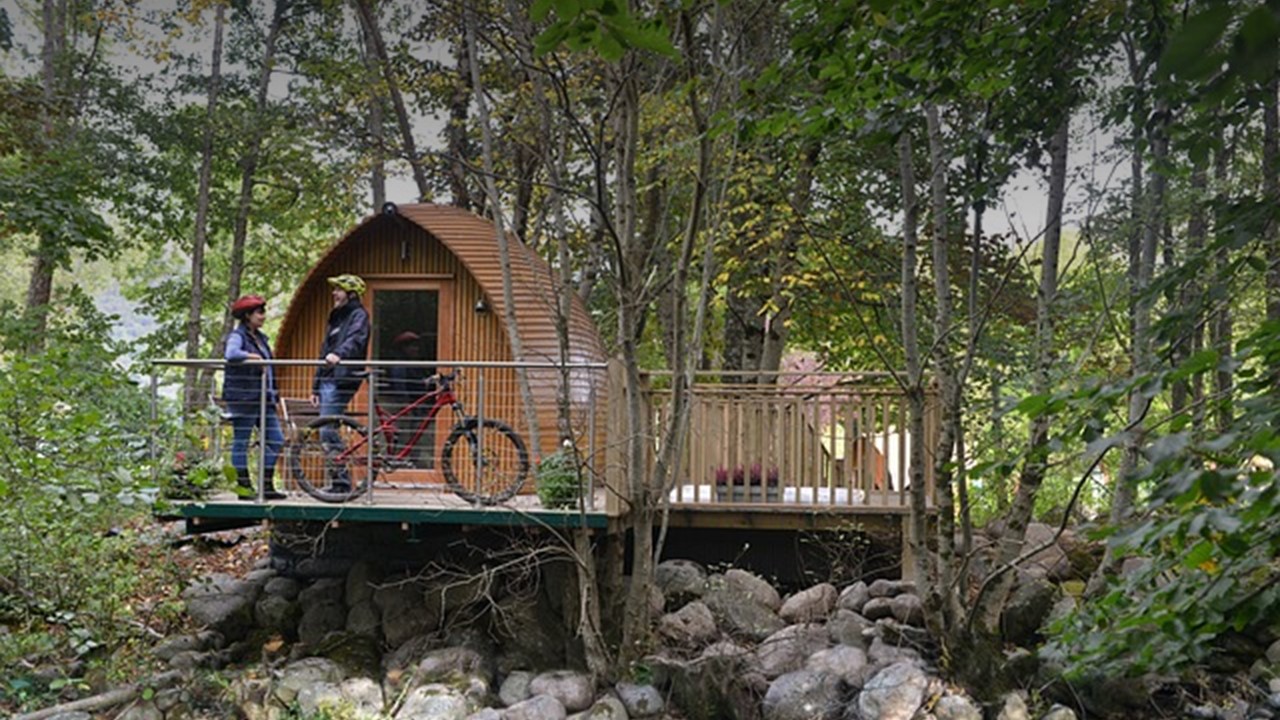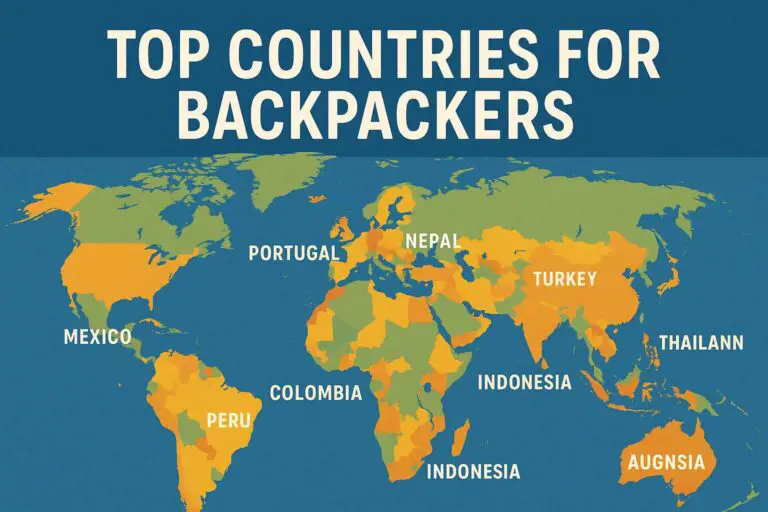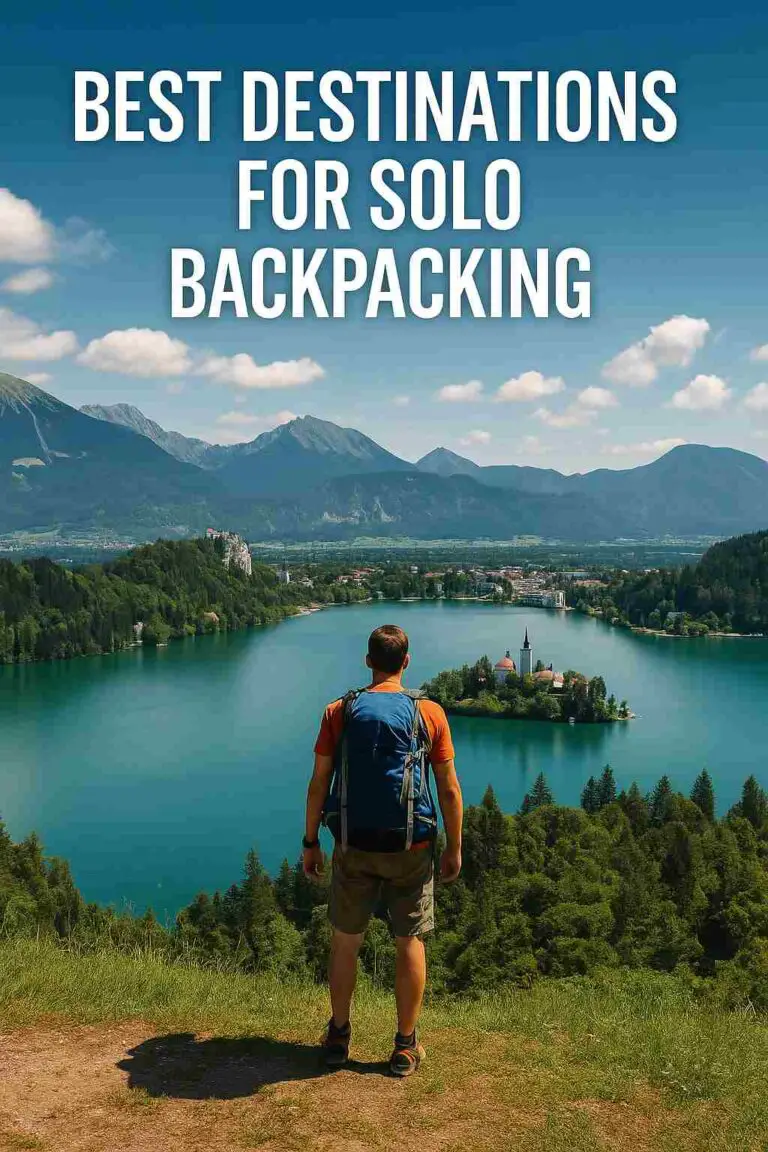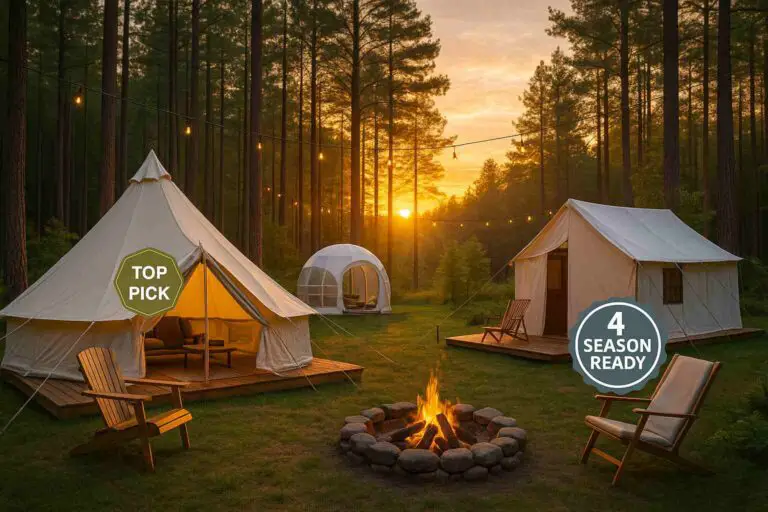Glamping or glamorous camping has gained immense popularity in recent years, and for good reason. It allows people to enjoy the beauty of nature without sacrificing the comforts of modern-day living. One type of glamping accommodation that has become increasingly popular is the glamping pod. These unique structures offer a perfect blend of camping and comfort, with their cozy interiors, eco-friendly features, and stunning outdoor surroundings. So, can you escape to nature and live in a glamping pod?
Yes, it is possible to live in a glamping pod, but there are several factors to consider before making this lifestyle choice. Glamping pods are designed to offer a comfortable and eco-friendly camping experience, but they may not be suitable for long-term living. Some factors to consider include limited space, lack of amenities, legal considerations, cost, and sustainability.
I’ll take a closer look at what glamping pods are, the pros and cons of living in one, where you can find them, the cost of living, and the sustainability of this lifestyle. So, let’s dive in and find out if glamping pods are a viable option for a long-term living situation.
What is a glamping pod?
A glamping pod is a small, self-contained structure designed for luxurious camping. They are typically made of wood or other eco-friendly materials and are designed to provide a comfortable and unique camping experience. Glamping pods are often equipped with a range of amenities, including heating, electricity, and lighting, and can even include features like kitchenettes, bathrooms, and cozy furnishings.
They come in a variety of sizes and shapes, from cozy pods that are perfect for solo travelers or couples, to larger pods that can accommodate families or groups of friends. Glamping pods are also designed to be eco-friendly, with many featuring sustainable features like solar power and composting toilets. In short, glamping pods offer a unique and comfortable way to experience the great outdoors, without sacrificing the comforts of home.
Types of glamping pods
Glamping pods come in a variety of styles and sizes, each with its unique features and benefits. Here are 5 of the most popular types of glamping pods:
- Traditional Glamping Pod – These are the most common type of glamping pod, and feature a small, compact design with a curved roof. They usually have a double bed and basic amenities, such as a small kitchenette and a bathroom.
- Mega Glamping Pod – These are larger than traditional glamping pods and can accommodate more people. They often feature a separate bedroom and living area, as well as a fully equipped kitchenette and bathroom.
- Eco Glamping Pod – These pods are designed with sustainability in mind and often feature eco-friendly materials, solar panels for electricity, and composting toilets.
- Geodesic Glamping Pod – These unique pods feature a dome-shaped design and provide a spacious and comfortable living space. They are ideal for stargazing and offer a 360-degree view of the surrounding environment.
- Treehouse Glamping Pod – These are glamping pods that are built in trees and offer a unique and exciting way to experience the outdoors. They often feature a balcony and are perfect for those looking for a bit of adventure.
These are just a few examples of the many types of glamping pods available. Each one offers a unique experience and can be tailored to suit different preferences and budgets.
Features of glamping pods
Glamping pods are designed to provide a luxurious camping experience with a range of features and amenities to make your stay comfortable and enjoyable. Here are 7 of the most common features of glamping pods:
- Cozy interiors – Glamping pods often have warm, cozy interiors with comfortable beds, cushions, and furnishings.
- Heating and cooling systems – Many glamping pods have heating and cooling systems to keep you comfortable throughout the year.
- Electricity and lighting – Glamping pods usually have electricity and lighting systems to provide power for charging devices, lighting, and other amenities.
- Kitchenettes – Some glamping pods come equipped with small kitchenettes, including a sink, refrigerator, and cooking facilities.
- Bathrooms – Glamping pods may feature private or shared bathrooms, including showers, toilets, and sinks.
- Outdoor space – Many glamping pods feature outdoor space, such as a patio or deck, with seating areas and stunning views of the surrounding environment.
- Eco-friendly features – Many glamping pods are designed with sustainability in mind, featuring eco-friendly materials, solar power, and composting toilets.
These are just some of the many features that you can expect to find in a glamping pod. Each pod is unique and may have different amenities and features depending on the location and style of the pod.
Differences between glamping pods and traditional camping
Glamping pods offer a more luxurious and comfortable camping experience than traditional camping. Here are some key differences between glamping pods and traditional camping:
- Accommodations – While traditional camping requires you to bring your tent and sleeping gear, glamping pods are fully furnished and equipped with amenities like heating, electricity, and comfortable beds.
- Weather protection – Traditional camping offers limited protection from the elements, but glamping pods provide a weatherproof shelter that allows you to enjoy the outdoors even in inclement weather.
- Amenities – Glamping pods often come equipped with kitchenettes, bathrooms, and other amenities that are not typically available when traditional camping.
- Convenience – With glamping pods, you don’t have to worry about packing and setting up your camping gear, as everything is provided for you. This makes glamping a more convenient and hassle-free option.
- Comfort – Traditional camping can be uncomfortable, especially when sleeping on the ground or in a cramped tent. Glamping pods offer a more comfortable and luxurious camping experience with amenities like comfortable beds and seating.
- Location – Glamping pods can be found in a variety of unique and remote locations, whereas traditional camping is usually limited to designated campgrounds.
Overall, glamping pods offer a more luxurious and comfortable camping experience than traditional camping, with a range of amenities and conveniences that make it an appealing option for those looking to enjoy the outdoors without sacrificing comfort.
Can you live in a glamping pod?
Yes, it is possible to live in a glamping pod, but there are some factors to consider before making this lifestyle choice. While glamping pods are designed to provide a comfortable camping experience, they may not be suitable for long-term living. Here are some things to consider before deciding to live in a glamping pod:
- Space – Glamping pods are typically small and compact, which can make it difficult to store belongings and live comfortably over an extended period.
- Amenities – While glamping pods come equipped with basic amenities like heating and electricity, they may not offer all the amenities you would expect from traditional housing, such as a full kitchen, laundry facilities, and a private bathroom.
- Legal considerations – Living in a glamping pod may not be legal in all areas, and you may need to obtain special permits or permissions to live in a glamping pod.
- Cost – While glamping pods can be a more affordable alternative to traditional housing, the cost of living in a glamping pod can vary widely depending on the location and amenities offered.
- Sustainability – Living in a glamping pod can be a more sustainable and eco-friendly choice than traditional housing, but you may need to make adjustments to your lifestyle to reduce your environmental impact.
In conclusion, while it is possible to live in a glamping pod, it is important to carefully consider the factors mentioned above before making this lifestyle choice. Glamping pods may be a great option for a temporary or seasonal stay, but they may not be suitable for long-term living.
Pros and cons of living in a glamping pod
Here are some pros and cons to consider before deciding to live in a glamping pod:
Pros:
- Unique and enjoyable living experience – Living in a glamping pod offers a unique and enjoyable living experience with proximity to nature, stunning views, and fresh air.
- Cost-effective – Compared to traditional housing, glamping pods can be a more affordable alternative for living, especially in areas with high housing costs.
- Eco-friendly – Glamping pods are often built using eco-friendly materials and feature sustainable features like solar power and composting toilets, making them a more sustainable living option.
- Low maintenance – Glamping pods are designed to be low-maintenance, with less upkeep than traditional homes, freeing up time for other activities.
- Mobility – Many glamping pods are designed to be portable, allowing you to move around and explore different areas without the hassle of packing and moving a traditional home.
Cons:
- Limited space – Glamping pods are typically small, which may limit the amount of living space and storage available.
- Lack of amenities – While glamping pods offer basic amenities, they may not provide all the amenities you would expect from traditional housing, such as a full kitchen or private bathroom.
- Legal considerations – Living in a glamping pod may not be legal in all areas, and you may need to obtain special permits or permissions to live in a glamping pod.
- Weather-dependent – Glamping pods may not be suitable for living in extreme weather conditions, such as heavy rain, snow, or high winds.
- Privacy – Glamping pods may not offer as much privacy as traditional housing, as they are often located in communal areas or close to other pods.
Tips for living in a glamping pod
If you decide to live in a glamping pod, here are 7 tips to help you make the most of your living experience:
- Declutter and organize – With limited space available, it’s important to declutter and organize your belongings to make the most of the space available.
- Embrace minimalism – Living in a glamping pod may require you to embrace a more minimalist lifestyle, focusing on the essentials and letting go of excess possessions.
- Invest in storage solutions – Look for creative storage solutions, such as under-bed storage, wall-mounted shelves, and multi-functional furniture.
- Get creative with decor – Add personal touches to your glamping pod by incorporating small, lightweight decor pieces that reflect your personality and style.
- Be mindful of energy use – Glamping pods often feature eco-friendly features like solar power, but it’s important to be mindful of energy use and avoid wasteful habits like leaving lights on when not in use.
- Keep the pod clean – Since the space is small, it’s important to keep the glamping pod clean and tidy to avoid clutter and maintain a comfortable living environment.
- Explore the outdoors – Glamping pods are often located in beautiful natural environments, so take advantage of the stunning surroundings by exploring the outdoors and engaging in outdoor activities.
In summary, living in a glamping pod requires some adjustments to your lifestyle, but it can be an enjoyable and unique living experience with the right mindset and preparation. By staying organized, embracing minimalism, and being mindful of energy use, you can make the most of your glamping pod living experience.
Where can you live in a glamping pod?
Glamping pods can be found in a variety of locations, from private properties to commercial glamping sites. Here are 5 options for where to live in a glamping pod:
- Private property – If you own your land, you may be able to set up a glamping pod on your property and live in it full-time.
- Glamping communities – There are a growing number of glamping communities that offer long-term glamping pod rentals. These communities often have shared amenities like communal kitchens and bathrooms, making them a great option for those who value community living.
- National parks – Many national parks now offer glamping pods as an alternative to traditional camping, providing a comfortable and eco-friendly way to experience the great outdoors.
- Eco-resorts – Eco-resorts often offer glamping pods as a sustainable alternative to traditional accommodation, with a focus on eco-friendly design and sustainable practices.
- Rural areas – Glamping pods can also be found in rural areas, such as farmland or vineyards, providing a unique and tranquil living experience.
It’s important to research and consider the different options available before deciding where to live in a glamping pod, as each option will have different costs, amenities, and legal considerations.
Legal considerations
Living in a glamping pod may not be legal in all areas, and it’s important to consider the legal considerations before deciding to live in one. Here are some factors to consider:
- Zoning regulations – Local zoning regulations may limit the use of glamping pods for residential purposes or restrict the locations where they can be placed.
- Building codes – Building codes may require certain standards for construction and safety, which may impact the design and cost of a glamping pod.
- Permits – Depending on the location, you may need to obtain permits or approvals from local authorities before setting up a glamping pod.
- Land use agreements – If you’re planning to set up a glamping pod on someone else’s property, you may need to obtain a land use agreement or lease.
- Homeowner associations – If you’re planning to live in a glamping pod community or on a private property that is governed by a homeowner association, you may need to obtain their approval before moving in.
Before deciding to live in a glamping pod, it’s important to research the local regulations and obtain any necessary permits or approvals to ensure that you comply with local laws. Additionally, it’s important to work with a qualified builder or designer who is familiar with the regulations and can help you navigate the process.
How to find a glamping pod to live in
If you’re interested in living in a glamping pod, there are several ways to find one:
- Online rental platforms – Many online rental platforms, such as Airbnb and Glamping Hub, offer listings for glamping pods that can be rented for short-term or long-term stays.
- Glamping communities – Glamping communities often offer long-term glamping pod rentals, and you can find them by searching online or through local real estate agents.
- National parks – Many national parks now offer glamping pods as an alternative to traditional camping, and you can find more information on their websites or by contacting the park directly.
- Eco-resorts – Eco-resorts often offer glamping pods as a sustainable alternative to traditional accommodation, and you can find them by searching online or through travel agencies.
- Private property – If you’re interested in living in a glamping pod on private property, you can search online for listings or contact local property owners directly.
When searching for a glamping pod to live in, it’s important to consider the location, amenities, and cost. It’s also important to research the legal considerations and obtain any necessary permits or approvals before moving in. Additionally, it’s a good idea to visit the glamping pod or community in person to get a feel for the living space and community culture.
Cost of living in a glamping pod
The cost of living in a glamping pod can vary widely depending on the location, amenities, and length of stay. Here are 5 factors to consider when estimating the cost of living in a glamping pod:
- Rent – The cost of renting a glamping pod can vary depending on the location and amenities. Short-term rentals can cost anywhere from $50 to $300 per night, while long-term rentals can range from a few hundred to a few thousand dollars per month.
- Utilities – Glamping pods often have basic utilities like electricity and water, but the cost of these utilities can vary depending on usage and location.
- Food – Depending on the amenities of the glamping pod, you may need to purchase food from local stores or restaurants.
- Transportation – If you’re living in a glamping pod community, transportation may be included in the rental cost. However, if you’re living in a remote location, you may need to factor in the cost of transportation.
- Maintenance – While glamping pods are designed to be low-maintenance, there may be some maintenance costs associated with living in one, such as cleaning supplies and minor repairs.
It’s important to research the cost of living in a glamping pod in your desired location and factor in any additional expenses when budgeting for your living expenses. While glamping pods can be a more affordable alternative to traditional housing, it’s important to consider all the costs associated with living in one before making a decision.
Sustainability of living in a glamping pod
Living in a glamping pod can be a more sustainable and eco-friendly option compared to traditional housing. Here are some ways that glamping pods promote sustainability:
- Eco-friendly materials – Many glamping pods are built using sustainable and eco-friendly materials like bamboo, recycled wood, and natural fibers.
- Energy efficiency – Glamping pods often incorporate energy-efficient features like solar power, LED lighting, and insulation to reduce energy consumption.
- Composting toilets – Many glamping pods feature composting toilets, which use organic matter to break down waste and create nutrient-rich compost for plants.
- Minimal environmental impact – Glamping pods have a minimal environmental impact compared to traditional housing, as they take up less space and use fewer resources.
- Sustainable living practices – Glamping pod communities often promote sustainable living practices like recycling, composting, and reducing waste.
Overall, living in a glamping pod can be a more sustainable and eco-friendly option for those looking to reduce their environmental impact. By using eco-friendly materials, incorporating energy-efficient features, and promoting sustainable living practices, glamping pods can be a great way to live a more sustainable lifestyle.
Conclusion
In conclusion, it is possible that you can escape to nature and live in a glamping pod. Glamping pods offer a unique and enjoyable living experience that can be a more sustainable and affordable alternative to traditional housing. With their compact size and basic amenities, glamping pods encourage a minimalist lifestyle that values simplicity and sustainability. While living in a glamping pod may require some adjustments to your lifestyle, it can provide a comfortable and eco-friendly living experience that brings you closer to nature and promotes a more sustainable way of life.
However, before deciding to live in a glamping pod, it’s important to research the legal considerations and costs associated with living in one and to find a location and community that meets your individual needs and preferences.








